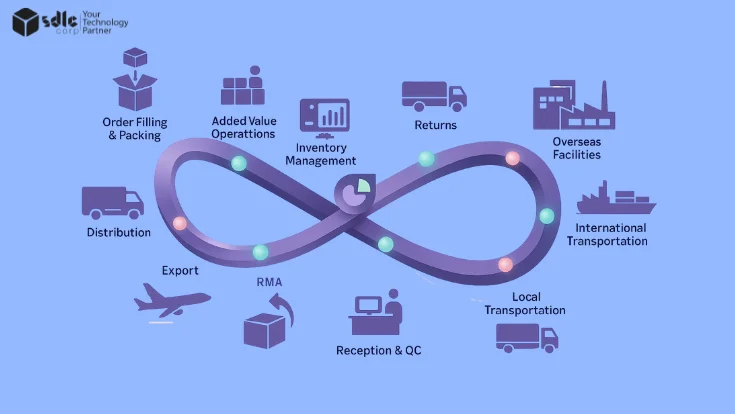Creating photo-realistic environments in game development is a challenging yet rewarding task. Unreal Engine, developed by Epic Games, stands as one of the most powerful tools for achieving this level of visual fidelity. With its robust set of features, including advanced lighting, dynamic materials, and real-time rendering capabilities, Unreal Engine makes it possible for developers to craft immersive, lifelike environments that push the boundaries of realism.
In this blog, we’ll explore how to create photo-realistic environments in Unreal Engine, focusing on the techniques and tools used by developers. Unreal Engine game development companies leverage powerful features like real-time ray tracing, high-fidelity material systems, and dynamic lighting to create lifelike environments that push the boundaries of visual fidelity.
To achieve this level of detail, Unreal Engine game development companies often rely on tools like Quixel Megascans for ultra-realistic textures and materials, along with Substance for creating detailed and dynamic surfaces. These assets are then combined with Unreal Engine’s advanced rendering pipeline to achieve photorealism in complex scenes.
Unreal Engine Game Development Company

Why Choose Unreal Engine for Photo-Realistic Environments?
Before diving into the technical aspects, it’s essential to understand why Unreal Engine is often the go-to choice for creating photo-realistic environments. Unlike other game engines, Unreal Engine is renowned for its advanced rendering capabilities and graphical performance. When comparing Unreal Engine vs Unity, the former often comes out ahead in terms of delivering high-quality visuals without sacrificing performance.
For developers looking to work with unreal engine game development services, it’s crucial to have a solid understanding of these features to ensure the successful implementation of photo-realistic environments.
Key Benefits of Using Unreal Engine for Realism:
- Real-time Ray Tracing: Unreal Engine’s real-time ray tracing allows for the creation of natural-looking lighting and shadows, bringing a new level of realism to virtual environments.
- Photorealistic Materials: The engine offers a vast library of photorealistic materials that developers can use to replicate the textures of real-world objects and surfaces.
- High-Quality Rendering: With Unreal Engine’s powerful rendering pipeline, developers can achieve exceptional levels of detail, even in complex scenes.
Step 1: Plan and Reference Your Scene
The foundation of any photo-realistic environment starts with careful planning. You should gather references and create a storyboard that defines the visual tone and structure of the environment. Tools like Quixel Megascans, which are integrated with Unreal Engine, provide high-resolution scans of real-world objects, helping developers maintain realism from the start.
It’s essential to select textures, landscapes, and objects that are authentic and fit well within the scope of your environment. Working with an unreal engine development company associative can help you streamline this process by providing expert guidance on scene planning and reference gathering.
Step 2: Use Photorealistic Materials and Textures
Unreal Engine excels in handling realistic materials, especially when developers understand how to use the PBR (Physically Based Rendering) material pipeline effectively. PBR materials simulate how light interacts with surfaces in the real world, which is crucial for achieving photo-realism.
How to Achieve Realistic Textures:
- Use High-Resolution Textures: Unreal Engine supports high-resolution textures that add finer details to your scene. Always ensure your textures are sharp and detailed, especially for close-up views.
- Layered Materials: Create multi-layered materials to simulate real-world textures like dirt, rust, and scratches.
- Normal and Displacement Maps: Use normal maps to add depth to flat textures and displacement maps to enhance surface details.
For teams looking to create large-scale environments, hiring Unreal Engine developers for hire with expertise in PBR materials can greatly enhance the overall quality of your project.
Step 3: Master Lighting and Shadows
Lighting is arguably the most crucial element of creating a photo-realistic environment. Dynamic global illumination, real-time ray tracing, and HDR lighting are some of the key features of Unreal Engine that allow you to create natural and believable lighting.
Techniques for Realistic Lighting:
- Dynamic Global Illumination (GI): Global Illumination simulates how light bounces off surfaces, adding depth and realism to your scene.
- Ray Tracing: By enabling real-time ray tracing, you can render realistic reflections, soft shadows, and accurate light behavior. This is especially useful in creating photorealism as it mimics how light behaves in real life.
- HDR Lighting: Using High Dynamic Range (HDR) lighting allows for a broader range of light and shadow contrasts, making the environment appear more natural.
Since mastering these lighting techniques can be challenging, working with an unreal engine development company can be beneficial in refining these processes and improving overall scene quality.
Unreal Engine Game Development Company

Step 4: Realistic Environment Design and Composition
Designing a photo-realistic environment is about more than just textures and lighting. Composition plays a critical role in ensuring that all elements work together cohesively to create a realistic scene.
Tips for Effective Composition:
- Use the Rule of Thirds: This classic design principle ensures a balanced composition that naturally draws the viewer’s eye to focal points.
- Natural Environment Flow: Create natural transitions between different parts of the environment. For example, if you’re designing a forest, the transition from grass to trees should feel organic, not abrupt.
- Depth of Field: Unreal Engine’s post-processing effects can add subtle depth-of-field effects, blurring background objects and focusing the viewer’s attention on specific areas.
Collaborating with an unreal engine game development company ensures you have a team of experts who understand the nuances of environment design and how to make each element look cohesive.
Step 5: Leveraging Unreal Engine’s Tools
Unreal Engine offers a wide array of tools that assist in creating photo-realistic environments:
- Landscape Tools: Unreal Engine’s landscape toolset allows developers to craft large, sprawling environments with ease. You can create hills, valleys, and other natural features using these tools, combined with high-quality textures for a realistic look.
- Volumetric Fog and Atmospheric Effects: Add volumetric fog, clouds, or atmospheric effects like rain to enhance the realism of outdoor environments.
- Particle Systems: Unreal Engine’s Niagara system enables developers to create dynamic particle effects like dust, fire, and water to add an extra layer of detail to environments.
For developers without advanced knowledge of these tools, it’s recommended to hire Unreal Engine developers who have experience working with these specific features.
Step 6: Real-Time Rendering with Unreal Engine 5
With the release of Unreal Engine 5, developers now have access to Nanite and Lumen technologies, which take real-time rendering and lighting to the next level. Nanite allows for the rendering of highly detailed objects without sacrificing performance, while Lumen provides dynamic global illumination without the need for pre-computed lighting.
Unreal Engine 5 vs Unity for Photorealism
When comparing Unreal Engine 5 vs Unity, Unreal Engine 5’s tools like Nanite and Lumen offer significant advantages for developers focusing on photo-realism. While Unity is highly flexible and excels in mobile and lightweight applications, Unreal Engine is often the top choice for developers aiming for high-end, visually complex projects. In fact, unreal engine development services offer specialized expertise in leveraging these tools to create immersive, realistic environments.
Step 7: Post-Processing Effects
To truly bring your photo-realistic environment to life, post-processing is essential. Unreal Engine’s post-processing volume allows developers to tweak lighting, shadows, and colors after the scene has been created.
Common Post-Processing Techniques:
- Color Grading: Adjust the overall color tone of the environment to enhance mood and atmosphere.
- Bloom and Lens Flares: Simulate how cameras capture light, adding a cinematic effect to the scene.
- Motion Blur: Apply subtle motion blur to create a sense of movement and realism in fast-paced environments.
By hiring experienced unreal engine developers for hire, you can ensure that these post-processing effects are used optimally to achieve the highest quality result.

Creating photo-realistic environments in Unreal Engine involves leveraging its powerful rendering tools, such as real-time ray tracing, dynamic global illumination, and high-quality PBR (Physically Based Rendering) materials. By using assets like those available in Quixel Megascans, developers can import ultra-realistic textures and models into their scenes. Additionally, features like volumetric fog, advanced lighting techniques, and post-processing effects enhance depth and realism. The combination of accurate lighting, detailed textures, and seamless transitions between different visual elements helps achieve an immersive and visually stunning environment that closely mirrors the real world. Unreal Engine’s capabilities allow game developers to push the boundaries of realism in both gameplay and cinematic experiences.
Unreal Engine Game Development Company

Conclusion: The Future of Photorealism with Unreal Engine
Unreal Engine is at the forefront of creating photorealistic environments in game development. With its powerful tools, like real-time ray tracing and dynamic global illumination, developers can create visually stunning, realistic scenes that immerse players in the game world.
For developers and companies aiming to achieve the highest levels of realism in their projects, collaborating with an unreal engine development company or opting to hire unreal engine developers with experience in photorealism is the key to success. Whether you’re building a large open-world game or a highly detailed small environment, unreal engine game development services provide the expertise necessary to push the limits of visual fidelity.
If you’re ready to take your game development to the next level, it’s time to explore unreal engine or unity for your project. While Unity offers flexibility, Unreal Engine is undoubtedly the superior choice for achieving photo-realism in complex, detailed environments. As we move forward with Unreal Engine 5 vs Unity, the advances in technology will only continue to elevate the quality of visual storytelling in game development.

















